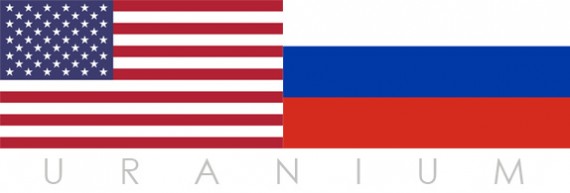Melbye provided an overview of Uranium One structure and global uranium production in a March 2012 presentation to a Toronto Mining Investors conference. As of that time the majority, 51%, of Uranium One shares were owned by the Russian Government through ROSATOM, the Russian Atomic Ministry via its uranium mining and milling subsidiary ARMZ, with the remainder owned publically. ROSATOM operates uranium mining and milling activities in Russia as ARMZ operating companies and uranium mine and mill projects outside Russia, in Kazakhstan, Australia, US and Tanzania, as through Uranium One, Inc. or, as in the case of the Mkuku project in Tanzania as a ARMZ/Uranium One Joint venture.
ROSATOM is involved in much, much more than just uranium mining and milling, of course, as Atomic Ministry of the Russian Federation it is provides a full range of nuclear technology services, describing their capabilities as “fully diversified, with operations ranging from uranium mining to nuclear power plant construction, power generation and sales.”
Since its Melbye election as UPA president, Uranium One and its London-based Vane Minerals, announced that their 50-50 partnership, Wate Mining Company, plans to develop an underground uranium mine on a Arizona State Land parcel just a mile and a half east of the Hualapai Indian reservation south of the Grand Canyon.
Uranium One acquired it majority ownership position in Uranium One in 2010 by trading case and partial ownership in two in situ recovery uranium mines in Kazakhstan for newly issued shares of Uranium One. Uranium One’s venture into Kazakhi uranium was facilitated by Former President Bill Clinton who introduce Canadian mining financier Frank Guistra, founder of Uranium One predecessor Ur-Asia Energy, to Kazakhstan President Kazakhstan’s president, Nursultan A. Nazarbayev, “whose 19-year stranglehold on the country has all but quashed political dissent” according to a NY Times article Clinton’s role the Kazakhstan uranium deal in January 2008. Following Kazatomprom. The Kazakhstani government-owned uranium companies deal with Guistra’s “second-tier junior” UrAsia, Guistra made donations totaling $130 million to the William J. Clinton Foundation. Since that time, UrAsia’s share of its Kazakhstan uranium properties were acquired by Uranium One, and ARMZ acquired a majority share in Uranium One in 2010 by selling parts of its share of several of the Kazakhstan in situ uranium projects.
Until this year, the U.S. and Russia operated a “megatons” to “megawatts” program to blend down weapons grade (highly enriched uranium - >95% U235) uranium and produce reactor grade (low enriched uranium 3- 5% U235) uranium that has fueled U.S. reactors. The successor to the Megatons” to Megawatts” program in the 2010 New Start treaty allows Russia to sell blended down uranium directly to U.S. nuclear reactor operators. ROSATOM recently announced the first direct reactor fuel deal.
So the Russian-owned uranium company whose executive was elected president of the Uranium Producers of America produces very little U.S. uranium production and very little US uranium production potential compared to its enormous uranium production capacity in place in the Kazakhstan and Russia and is selling nuclear fuel directly to U.S. reactor operators from its Russia uranium resources. And the U.S. produces uranium at only 30% of the production capacity approved by licenses from the Nuclear Regulatory Commission or license-issuing states such as Utah and Texas. While the Uranium Producers of America are struggling to make their industry more viable, their newly elected President’s firm is selling nuclear fuel directly to U.S. utilities from its Russia, its home country.
That is pretty complex, but only a small part of the story of uranium producers in the U.S. and who wants to produce uranium here in the future.




Responses to “Foreign infiltration of U.S. uranium industry?”